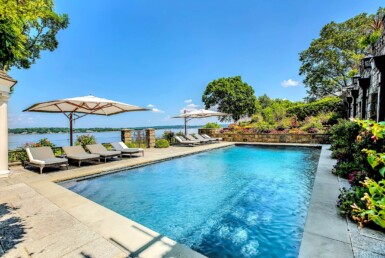The History of Urban Reconstruction in Athens & Greece

Bloomberg, in a recent article emphasized the advantages of modern urban construction in Athens.
In the article were highlighted the pros and cons of the apartment building, of Greek capital. Apartment buildings, hosted both wealthy and poorer families as well as businesses, creating neighborhoods full of life all day long.
These modernist apartment buildings were built quickly and cheaply mainly from 1950s to 1980s. At that time, people from the provinces came to Athens, after the countryside was destroyed due to the civil war which ended in 1949. The apartment buildings were built next to each other and their continuous facades and the endless rows of stretched balconies give the city a cohesive appearance. They were not as beautiful as the neoclassical houses of previous years, but they contributed to the creation of a socially integrated and vibrant city.
“Young Athenians needed houses quickly, but the state had neither the money nor the will to build public housing, and the banks offered few loans. To solve this problem, the Greeks
created their own financing system called consideration, in which the builders saved the cost of buying land by giving the landowners a share of the houses when they were completed “ explains the article.
Panos Dragas, architect and professor at the University of Patras in Greece explains “The idea was that landowners give up their property, and in return get, for example, two to five apartments back in the completed building to live on or rent or sell. It was a housing development system and the state offered incentives for construction, providing tax relief.”
Apartment buildings were built on traditional streets in urban neighborhoods, with different heights and lengths giving a random final impression. Apartments consist of 2-3 bedrooms, they have balconies which are large enough to fit a large dining table and plants. The apartments had shared central heating. The variety of apartments in the same building ensured social involvement. “There were richer people upstairs, in the penthouses,” says Mr. Draganas, “People who have just arrived from the countryside below and poor students in the basement. This kind of vertical layering inside a five-story building helped Athens avoid horizontal layering. There were really no neighborhoods that were just rich or just poor. And the apartment buildings in the richest and poorest areas were more or less the same building.The Municipality of Athens allowed people to set up shops in an apartment building. Even today, these buildings are often cells of activity, mixing offices, medical offices and homes. That is why the streets of Athens have a wonderful standard of living all day, all night and all week “.
Of course, the apartment buildings were not perfect as the plumbing and insulation were not created properly. In lower quality apartments, there may be full windows only along the balcony of the apartment, while the kitchens may not be bright. But this problem would probably be bigger in a colder country. Greeks are usually more interested in retaining heat than light. The economic crisis of 2007-2008 revealed more serious problems – especially regarding heating. The apartment building is heated by a central boiler for each building, and after the crisis, many Athenians who faced unemployment or reduced wages could no longer afford the cost of it. If two or three houses or offices in a building decided to stop paying for utilities and heating costs, everyone else in the building had to either cover the missing costs or not have heating.
As the original owners have bequeathed their homes to many children, a building can have up to 70 communal owners, making it impossible to make decisions about even a simple maintenance or renovation.
A walk in Athens can make somebody realize that beside the problems mentioned previously, living in an apartment can be really great. Upstairs, families sit and eat and chat on balconies full of flowers, while people relax on terraces with cafes.
“The apartment buildings helped creating a city that feels both vibrant and comfortable, both modern and thousands of years old” the author of Bloomberg concludes.





Join The Discussion
You must be logged in to post a comment.